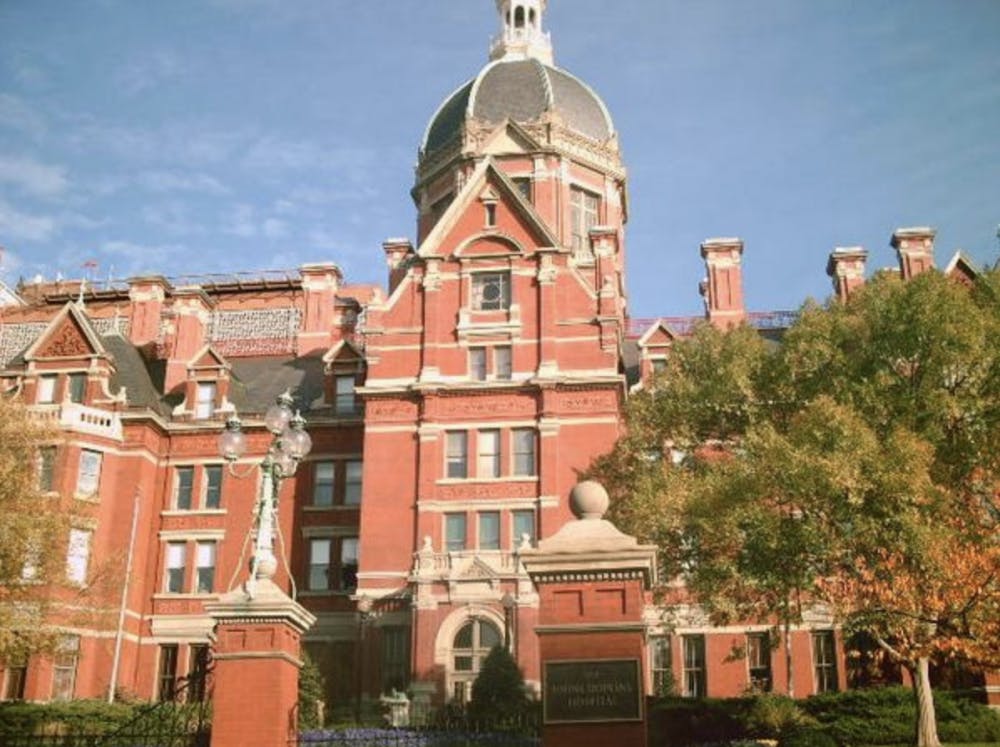Last year, as I was wheeling a patient into the Hopkins Hospital, she started coughing. Normally, that wouldn’t be in an issue. We were in a hospital after all. Having gotten into an accident, she needed a lot of help from the social service group that I work with to find her a new source of income. The coughing issue spiraled quickly, becoming unexpected and uncontrollable, so I quickly rushed her inside. After drinking some water and feeling more stable, she finally spoke up.
“Don’t worry, that always happens when I’m near smoke, I have asthma.”
Smoking? At a hospital?
It turns out that Hopkins Hospital is one of the only hospitals in Baltimore that still has smoking zones on the hospital campus. Hospitals nearby, including Mercy Medical Center and Medstar Union Memorial Hospital, have implemented fully smoke-free premises. Despite Hopkins Hospital supporting a tobacco-free environment, patients and some employees continue to smoke right next to entrances, with no-smoking signs right behind them. So what makes the Hopkins Hospital policy different?
I sought out Dr. Frances Stillman, who is renowned for reducing the use of tobacco and lead the 1988 initiative to create a smoke-free Hopkins Hospital. At that time, Hopkins Hospital was the first hospital to ban smoking inside the hospital. “Hopkins was the gold standard when it came to tobacco prevention in the hospital,” she told me. “The push for Hopkins Hospital having a totally smoke-free campus, at this time, isn’t anything new or different; it’s the way things need to be. However, it does not seem to be a priority.”
The dangers of smoking are well known. Much of the research detailing its effects has been produced by Hopkins faculty, but Hopkins has been unable to create a comprehensive smoking policy that protects the rights of its patients and workers. Hopkins policy states that there will be no tobacco use except for specifically designated smoking areas. “Employees and visitors who wish to smoke or vape may do so in these designated areas. They may also do so on public sidewalks on the perimeter of Johns Hopkins buildings unless the area is posted as No Smoking.”
The issue with this is, in order to get into the hospital, patients need to use these very same public sidewalks that are right outside of the Hopkins Hospital. Although it is difficult to make public sidewalks smoke-free or tobacco-free, it is being done all over the country. In fact, Medstar Union Memorial Hospital has a smoking policy that states that “smoking and the use of all tobacco products is prohibited on all grounds of the hospital, including parking garages, personal vehicles and sidewalks surrounding the campus.”
Additionally, the “tobacco-free” designation at areas of the Hopkins Hospital seems to largely be ignored, with patients, visitors, students and staff smoking throughout the day. The Hopkins Hospital policy states that security will help “assist in the monitoring and control of tobacco usage in unauthorized areas.”
Hopkins is embedded in the Baltimore community, and when a major health institution outright bans smoke entirely, it sends a message. It can help a community change its approach and behavior toward smoking and tobacco use. When patients come to Hopkins Hospital for tobacco cessation, I imagine that they’d at the very least be surprised that nothing is being done about the patients and staff smoking on Hospital grounds.
In order to responsibly make Hopkins a tobacco-free hospital, a taskforce with representation from patients, security, staff, physicians and other affected populations who know about tobacco control and have an understanding of the physical environment needs to be created. By having comprehensive representation from key stakeholders of the hospital, the task force can determine which steps to take to implement a tobacco-free campus, so staff and others are fully informed and understand what is happening and why. Additionally, it is of utmost importance to provide smoking cessation resources to all Hopkins affiliates and their dependents while fostering a positive environment for those trying to quit tobacco use.
To ensure that this tobacco-free policy is non-discriminatory, the administration should provide accommodations for staff that may be disproportionately affected by this. I am concerned about overall health at the hospital and in Baltimore: particularly for those who have no choice but to inhale secondhand smoke, like patients with asthma who cough uncontrollably when walking into these buildings. The grounds of a hospital should be a healthy environment. No patient should have to walk through a cloud of smoke to see their doctor about their asthma. This initiative is intended to educate smokers about the severity of secondhand smoke, to provide resources to help those who want to quit and to create a safer community.
All members of the Hopkins community should have the right to choose whether or not they will accept the risks of tobacco exposure. The proposal does not attempt to impose on an individual’s choice or right to smoke but rather to control the effects of that choice on the larger population of students, faculty and employees of Hopkins. Why has Hopkins, a leader in public health, not created tobacco-free policies with their hospital? As a pioneer in public health and medicine, the Hopkins Hospital should adopt a fully tobacco-free policy to protect and preserve the health, wellbeing and the integrity of its community.
Rushabh Doshi is a senior Public Health major from Cerritos, Calif. He is the co-president of the anti-tobacco student organization Hopkins Kicks Butts.





